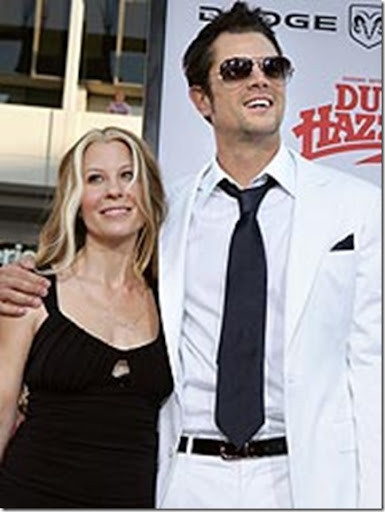The soda was fairly popular throughout the 1960s and 1970s, and the Coca Cola company made several variations of it, including Tab Clear and Tab X-Tra, as well as caffeine-free versions.
The soda later garnered negative publicity when scientists speculated that its main sweetener, sodium saccharin, was a potential animal carcinogen. These studies, done on lab rats, resulted in mandatory warning labels on the soda throughout the late 1970s and 1980s. In recent years, the studies asserting saccharin's carcinogenic effects have been largely debunked. Recent studies found the initial findings to be "flawed" and U.S. Food and Drug Administration (FDA) revoked the mandatory health labels in 2000, deeming no correlation between saccharin and cancer in humans. Additionally, in December 2010, the U.S. Environmental Protection Agency removed saccharin from its list of hazardous substances.
As of 2009[update], Tab is sold in the countries of the Southern African Customs Union (Botswana, Lesotho, Namibia, South Africa, Swaziland), the United States (including the U.S. Virgin Islands), Hong Kong and Spain.
Tab was introduced as a diet drink in 1963. Coca-Cola's marketing research department used its IBM 1401 computer to generate a list of over 250,000 four-letter words with one vowel, adding names suggested by the company's own staff; the list was stripped of any words deemed unpronounceable or too similar to existing trademarks. From a final list of about twenty names, "Tabb" was chosen, influenced by the possible play on words, and shortened to "Tab" during development, and designer Sid Dickens gave the name the capitalisation pattern ("TaB") used in the logo.[citation needed]
Tab has been reformulated several times. It was initially sweetened with cyclamate. After the Food and Drug Administration (FDA) issued a ban on cyclamate in 1969, saccharin was used. In 1977, the FDA moved to ban saccharin. The ban proposal was rejected by the U.S. Congress, but it did require that all products containing saccharin carry a warning label that saccharin may cause bladder cancer (a regulation eliminated in 2000). Further studies find no evidence that saccharin has yet caused an increase in bladder cancer.
At the height of its popularity, the Tab name was briefly extended to other diet soft drinks, including Tab Lemon-Lime, Tab Root Beer and Tab Orange.[citation needed]
Tab's popularity began to decline in 1982, with the introduction of Diet Coke. A formula revision in 1984 blended saccharin with a small amount of aspartame; this is the formula that is currently marketed in North America.[citation needed]
In 1993, Coca-Cola released Tab Clear in the U.S., Australia and UK. It was withdrawn after less than a year. Typically, Tab is now usually found in supermarkets and convenience stores in 12-ounce cans, by 12-pack or 6-pack. It is also available in some places in two-liter bottles. Tab Energy is an energy drink released in early 2006. Though sharing the brand name, Tab Energy does not share the same taste.
The soda later garnered negative publicity when scientists speculated that its main sweetener, sodium saccharin, was a potential animal carcinogen. These studies, done on lab rats, resulted in mandatory warning labels on the soda throughout the late 1970s and 1980s. In recent years, the studies asserting saccharin's carcinogenic effects have been largely debunked. Recent studies found the initial findings to be "flawed" and U.S. Food and Drug Administration (FDA) revoked the mandatory health labels in 2000, deeming no correlation between saccharin and cancer in humans. Additionally, in December 2010, the U.S. Environmental Protection Agency removed saccharin from its list of hazardous substances.
As of 2009[update], Tab is sold in the countries of the Southern African Customs Union (Botswana, Lesotho, Namibia, South Africa, Swaziland), the United States (including the U.S. Virgin Islands), Hong Kong and Spain.
Tab was introduced as a diet drink in 1963. Coca-Cola's marketing research department used its IBM 1401 computer to generate a list of over 250,000 four-letter words with one vowel, adding names suggested by the company's own staff; the list was stripped of any words deemed unpronounceable or too similar to existing trademarks. From a final list of about twenty names, "Tabb" was chosen, influenced by the possible play on words, and shortened to "Tab" during development, and designer Sid Dickens gave the name the capitalisation pattern ("TaB") used in the logo.[citation needed]
Sarah Silverman Program | Sarah Silverman show. |  tab episode - sarah silverman |  tab episode - sarah silverman | Sarah Silverman Program 2007 |
Sarah Silverman Program, | Hahahahaha The Tab Cola | Episode 1.01 | The Sarah Silverman Program | The Sarah Silverman Program |
Tab's popularity began to decline in 1982, with the introduction of Diet Coke. A formula revision in 1984 blended saccharin with a small amount of aspartame; this is the formula that is currently marketed in North America.[citation needed]
Sarah Silverman Program | Sarah Silverman Program\x26#39;s |  Sarah Silverman Program, | tab episode - sarah silverman | Sarah Silverman |
Sarah Silverman Program | The Sarah Silverman Program: | The Sarah Silverman Program | The last episode of The Sarah |  Johnny Knoxville and ex-Wife |
No comments:
Post a Comment